Straight Up Guide To Quickly Reducing Stress and Anxiety
These guides were born out of Noah and Christine’s frustration with overly complicated and jargon-filled articles, newsletters, books, and therapy websites. Our mission is to create clear and practical guides in order to learn, grow from challenges, and lead more meaningful and impactful lives. Tip #1: Think of at least 1 thing you are grateful for in life currently. Spend one minute bringing this thing, person, or experience to mind and allow yourself to embrace the sense of gratitude and other pleasant emotions that arise. You can repeat this exercise with other positive experiences like peace, joy, and love by remembering the last time you experienced those feelings, and recalling the details of the experience to “re-live” the moment for a few minutes. Tip #2: Give your breath some focused attention. Try directing your attention to the rising and falling of your chest and belly as you breathe. No need to...









